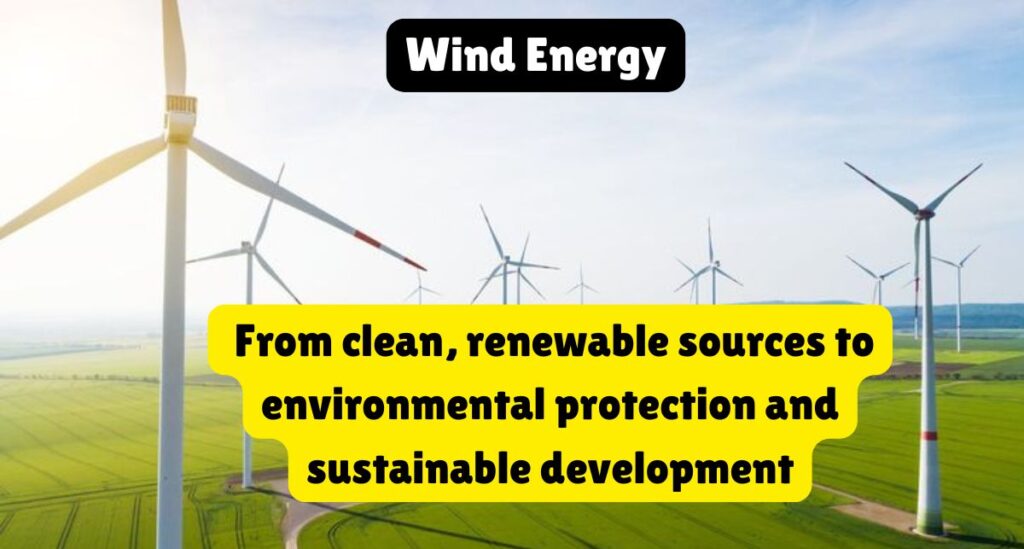Wind Energy: “Harnessing the Breezes of Change: Unveiling the Green Revolution of Wind Energy “Wind energy, a renewable power source derived from the kinetic energy of moving air, has emerged as a vital player in the global transition toward sustainable energy solutions. Its significance lies in several key aspects:
- Clean and Sustainable: Wind energy produces electricity without emitting greenhouse gases or other pollutants, making it an environmentally friendly alternative to fossil fuels.
- Abundant Resource: Wind is a nearly limitless resource found on every continent, providing consistent energy potential in many regions.
- Energy Independence: Wind power contributes to reduced reliance on finite fossil fuels, enhancing energy security and reducing the impact of fuel price fluctuations.
- Job Creation: The wind energy sector fosters job growth in manufacturing, installation, maintenance, and research, boosting local economies.
- Grid Stability: Wind power can diversify the energy mix, improving grid reliability when coupled with other renewables and energy storage systems.
- Cost Competitiveness: Ongoing advancements in technology have significantly reduced the cost of wind energy, making it increasingly competitive with traditional energy sources.
- Global Growth: Wind energy capacity continues to expand worldwide, with many countries setting ambitious renewable energy targets.
Wind energy’s importance is underscored by its role in mitigating climate change, reducing air pollution, and fostering a more sustainable and resilient energy future. As we delve deeper into this green revolution, we uncover how wind energy is revolutionizing the way we power our world.
History of Wind Energy:-
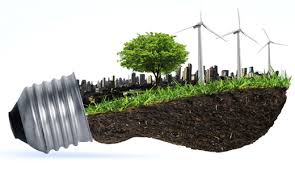
The historical development of wind energy spans centuries and has evolved from simple windmills to the highly efficient modern wind turbines we see today:
- Ancient Windmills:
- Wind energy’s roots can be traced back over a thousand years to ancient civilizations. Early windmills were used primarily for grinding grain and pumping water.
- The first known windmill was built in Persia (modern-day Iran) around 500-900 AD. These early designs featured vertical-axis wind turbines.
- Medieval Europe:
- Windmills became more widespread in Europe during the Middle Ages. Dutch and Danish windmills, in particular, were crucial for land reclamation and milling grain.
- The classic Dutch windmill, with its iconic design featuring wooden blades and a rotating top, became an emblem of this era.
- 19th Century Innovations:
- In the 19th century, significant innovations took place. Daniel Halladay patented the first practical American windmill in 1854, featuring a horizontal-axis design and self-regulating blades.
- These windmills played a vital role in settling the American West, providing water for agriculture and homesteads.
- Electrification Era:
- Wind energy took a leap in the early 20th century with the development of electric-generating wind turbines. Pioneers like Charles Brush and Poul la Cour contributed to this advancement.
- However, during this era, wind turbines were mainly used in remote and off-grid locations.
- Modern Wind Turbines:
- The 1970s marked the beginning of the modern wind energy industry. Advances in materials, engineering, and aerodynamics led to the development of larger and more efficient turbines.
- The transition to three-blade, horizontal-axis turbines, like those commonly seen today, increased energy capture and reliability.
- Global Expansion:
- Wind energy grew steadily throughout the late 20th century, with Europe taking the lead in wind turbine installations.
- As concerns about climate change and energy security intensified, many countries began adopting wind energy as a significant part of their renewable energy strategies.
- Offshore Wind Farms:
- A recent trend is the development of offshore wind farms, which harness stronger and more consistent winds at sea. These projects are becoming increasingly common in Europe and the United States.
- Technological Advancements:
- Ongoing innovations include larger rotor diameters, taller towers, and advanced materials, which boost energy output and lower costs.
Today, wind energy is a cornerstone of the global renewable energy landscape, providing a sustainable and scalable solution to our energy needs while reducing greenhouse gas emissions and dependence on fossil fuels. Its journey from ancient windmills to modern turbines represents a remarkable evolution in harnessing the power of the wind.
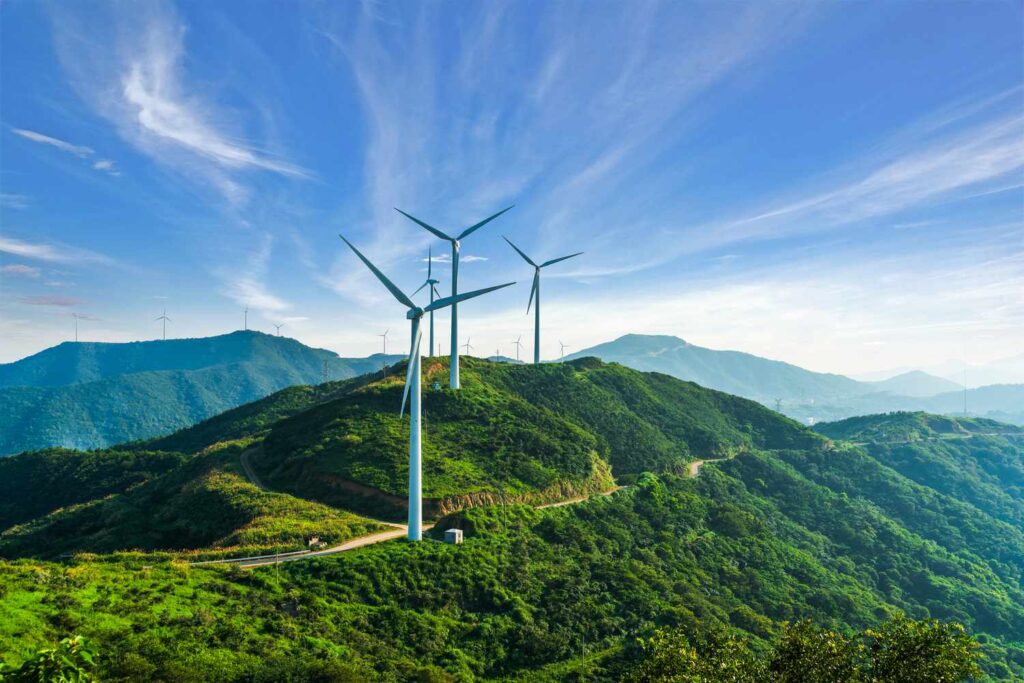
The evolution of wind power has seen several key milestones that have shaped its development into a prominent source of renewable energy. Here are some of the most significant milestones:
- Early Windmills (500-900 AD):
- The earliest recorded use of wind power dates back to ancient Persia, where vertical-axis windmills were used for various tasks such as grinding grain and pumping water.
- European Windmills (12th-19th centuries):
- Windmills became prevalent in Europe during the Middle Ages, particularly in the Netherlands and Denmark. They were used for land drainage, milling, and other industrial applications.
- Electricity Generation (late 19th century):
- Daniel Halladay’s self-governing windmill in the 1850s marked the transition to using wind energy for electricity generation, particularly in rural and remote areas.
- First Wind Turbine Patent (1888):
- Charles F. Brush received the first U.S. patent for a wind turbine designed to generate electricity. It had a 12 kW capacity and was used to power his mansion’s lighting.
- Smith-Putnam Wind Turbine (1941):
- The Smith-Putnam wind turbine, built in Vermont, was one of the first utility-scale wind turbines in the world. It had a capacity of 1.25 MW and supplied electricity to the grid for several years.
- 1970s Wind Energy Renaissance:
- The oil crisis of the 1970s spurred renewed interest in wind energy. Government research and development programs were initiated in countries like the United States, leading to significant advancements.
- California Wind Boom (1980s):
- California’s Altamont Pass Wind Farm, featuring thousands of wind turbines, became a symbol of wind energy growth in the 1980s.
- Growth in Europe (1990s):
- Europe saw a surge in wind energy installations in the 1990s, driven by supportive policies and a growing environmental awareness. Denmark, Germany, and Spain were early leaders.
- First Offshore Wind Farm (1991):
- The Vindeby Offshore Wind Farm in Denmark was the world’s first offshore wind farm, consisting of 11 turbines.
- Technological Advancements (2000s-Present):
- Ongoing innovations have led to the development of larger, more efficient turbines, including multi-megawatt models with improved rotor designs and materials.
- Global Expansion (2010s-Present):
- Wind energy expanded globally, with China becoming the largest market and the United States experiencing significant growth.
- Record-Breaking Turbines (2020s):
- In recent years, wind turbines with capacities exceeding 10 MW have been developed, contributing to higher energy yields and lower costs.
- Offshore Wind Growth (2020s):
- Offshore wind power has surged, with major projects underway in Europe, the United States, and Asia, harnessing powerful offshore winds.
These milestones represent the remarkable journey of wind power, from ancient windmills to cutting-edge turbines, and its transformation into a cornerstone of the renewable energy landscape.
How Wind Turbines Work:-

Wind turbines generate electricity through a straightforward process that involves converting the kinetic energy of wind into electrical power. Here are the basic principles of how wind turbines work:
- Capturing Wind Energy:
- Wind turbines consist of three primary components: rotor blades, a hub, and a generator.
- When the wind blows, it flows over and around the rotor blades, creating a difference in air pressure on either side of the blades.
- Rotor Blades:
- The rotor blades are designed with an airfoil shape, similar to an airplane wing. This shape is optimized to efficiently capture the kinetic energy in the wind.
- Rotation:
- As the wind flows over the blades, it generates lift on the side with lower air pressure, causing the blades to rotate.
- This rotation is facilitated by the hub, which connects the blades to the main shaft.
- Kinetic to Mechanical Energy:
- The rotational motion of the blades is transferred to the main shaft connected to the generator.
- This mechanical energy is then used to turn the generator’s rotor.
- Electricity Generation:
- Inside the generator, there are coils of wire within a magnetic field.
- When the rotor turns, it induces a magnetic field within the wire coils, creating an electric current through a phenomenon known as electromagnetic induction.
- AC Electricity:
- The electric current generated is typically in the form of alternating current (AC), which is the type of electricity used in homes and the electrical grid.
- Power Regulation:
- Wind turbines are equipped with controls and systems that adjust the angle of the rotor blades or pitch to optimize power generation. This ensures that the turbine operates efficiently in varying wind conditions and doesn’t spin too fast in high winds, which could cause damage.
- Transformer and Grid Connection:
- The electricity produced by the generator is usually at a low voltage. It’s then passed through a transformer to increase the voltage, making it suitable for transmission over long distances.
- Integration into the Electrical Grid:
- The high-voltage electricity is then fed into the electrical grid, where it becomes part of the overall electricity supply.
- Wind farms, consisting of multiple turbines, are often connected to the grid collectively to provide a stable and consistent power supply.
- Maintenance and Monitoring:
- Wind turbines require regular maintenance to ensure they operate efficiently and safely. Sensors and monitoring systems are used to track performance and detect any issues.
Wind turbines harness the kinetic energy of the wind to produce electricity, making them a clean and sustainable source of power in the broader context of renewable energy. Their efficiency and capacity have improved significantly over the years, contributing to their widespread adoption as a key component of the world’s energy mix.

There are two primary types of wind turbines: horizontal-axis and vertical-axis turbines.
- Horizontal-Axis Wind Turbines (HAWT):
- Most commonly used and recognizable.
- Blades spin around a horizontal axis, like a propeller.
- Can be further categorized into two subtypes:
a. Upwind Turbines: The rotor faces into the wind.
b. Downwind Turbines: The rotor faces away from the wind. - Typically more efficient and widely deployed in large-scale wind farms.
- Vertical-Axis Wind Turbines (VAWT):
- Blades rotate around a vertical axis, resembling an eggbeater or a helix.
- Less common in large-scale applications but gaining popularity for specific uses.
- Advantages include simplicity, omnidirectional wind capture, and suitability for urban environments.
- Comes in various designs, such as Savonius and Darrieus turbines.
Each type has its advantages and disadvantages, making them suitable for different situations and locations based on factors like wind speed, space availability, and intended use.
Benefits of Wind Energy:-
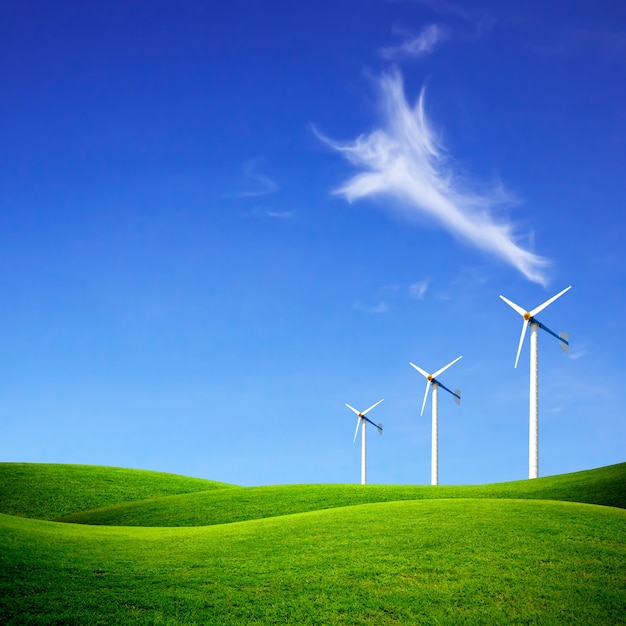
The use of wind turbines, both horizontal-axis and vertical-axis, offers several environmental benefits, contributing to reduced greenhouse gas emissions and the conservation of natural resources:
- Greenhouse Gas Emission Reduction:
- Wind turbines produce electricity without burning fossil fuels, which results in zero direct emissions of greenhouse gases like carbon dioxide (CO2) and methane (CH4).
- By generating clean, renewable energy, wind power reduces the need for fossil fuel-based electricity generation, which is a significant source of global greenhouse gas emissions.
- Air Quality Improvement:
- Wind energy reduces air pollution by displacing power generation from coal, natural gas, and other fossil fuels. This leads to lower emissions of harmful pollutants like sulfur dioxide (SO2), nitrogen oxides (NOx), and particulate matter.
- Improved air quality has direct health benefits, reducing respiratory problems and related healthcare costs.
- Conservation of Natural Resources:
- Wind power harnesses a naturally occurring resource—wind—without depleting finite fossil fuel reserves. This contributes to the conservation of natural resources and reduces the environmental impact associated with resource extraction.
- It also helps in conserving water resources, as wind turbines don’t require water for cooling, unlike many conventional power plants.
- Mitigation of Climate Change:
- Wind energy plays a vital role in mitigating climate change by providing a low-carbon alternative to fossil fuels. This helps slow down the warming of the planet and reduces the risk of severe climate-related events.
- Biodiversity Preservation:
- Compared to some other forms of renewable energy like hydropower or large-scale solar farms, wind turbines have a smaller footprint, which can help preserve local ecosystems and habitats.
- Proper siting and planning can further minimize their impact on wildlife.
- Energy Independence:
- Wind power reduces dependence on imported fossil fuels, enhancing energy security and reducing vulnerability to fuel price fluctuations and supply disruptions.
- Sustainable Energy Source:
- Wind is a renewable resource, meaning it’s continuously available and won’t run out. This makes wind energy a sustainable, long-term solution to meet growing energy demands.
While wind energy offers substantial environmental benefits, it’s important to note that the construction and maintenance of wind turbines have their own environmental considerations, such as land use and materials used. Proper planning, environmental impact assessments, and sustainable practices are essential to maximize the positive impacts of wind energy while minimizing potential drawbacks.
Wind Energy Around the World:-

As of my last knowledge update in September 2021, several countries were leading in wind energy production. Keep in mind that the rankings and statistics may have changed since then due to ongoing developments in the renewable energy sector. Here are some examples:
- China:
- China has consistently been the world’s largest producer of wind energy.
- In 2020, China’s installed wind power capacity exceeded 280 gigawatts (GW), accounting for about 39% of global wind capacity.
- Inner Mongolia and Xinjiang are among the leading regions for wind power in China.
- United States:
- The United States has a significant wind energy capacity.
- In 2020, the U.S. had over 118 GW of installed wind capacity.
- Texas, Oklahoma, and Iowa are prominent states for wind energy production.
- Germany:
- Germany has been a pioneer in wind energy in Europe.
- In 2020, Germany had over 61 GW of installed wind capacity.
- Offshore wind farms in the North Sea have contributed substantially to its wind energy production.
- India:
- India has been rapidly expanding its wind energy capacity.
- In 2020, India had over 38 GW of installed wind capacity.
- States like Tamil Nadu, Gujarat, and Rajasthan are leading in wind energy production.
- Spain:
- Spain has been a long-time leader in wind energy production in Europe.
- In 2020, Spain had over 27 GW of installed wind capacity.
- Regions like Castile and León have extensive wind farms.
- Brazil:
- Brazil has seen substantial growth in wind energy production.
- In 2020, Brazil had over 17 GW of installed wind capacity.
- The northeastern region, including states like Bahia and Rio Grande do Norte, is a wind energy hotspot.
- Denmark:
- Denmark is known for its early adoption of wind power technology.
- In 2020, Denmark had over 6 GW of installed wind capacity.
- The country is a leader in offshore wind farms.
- UK:
- The United Kingdom has been rapidly expanding its offshore wind capacity.
- In 2020, the UK had over 24 GW of installed wind capacity, with a significant portion being offshore.
- Offshore wind farms in the North Sea and Irish Sea are major contributors.
These statistics highlight the global growth of wind energy as a clean and sustainable power source. Many other countries are also increasing their wind energy production capacity as part of their efforts to reduce carbon emissions and transition to renewable energy sources. For the most up-to-date information, you should refer to recent reports and publications from energy agencies and organizations.

International efforts to expand wind energy capacity have been significant, reflecting a growing commitment to combat climate change, reduce greenhouse gas emissions, and transition to clean, renewable energy sources. Here are some key aspects of these efforts:
- Global Targets and Agreements:
- The Paris Agreement, signed in 2015, plays a pivotal role in driving international efforts to expand wind energy capacity. Many countries have committed to reducing emissions and increasing renewable energy deployment as part of their nationally determined contributions (NDCs).
- The United Nations Sustainable Development Goals (SDGs), particularly Goal 7 (Affordable and Clean Energy), also encourage the expansion of wind and other renewable energy sources to ensure access to clean energy for all.
- International Financing and Investment:
- Various international organizations, including the World Bank and regional development banks, provide financial support and technical assistance to help countries develop their wind energy infrastructure.
- Investment from the private sector and international renewable energy funds has been instrumental in expanding wind energy capacity in many nations.
- Research and Development Collaboration:
- Countries often collaborate on research and development projects to advance wind turbine technology and efficiency.
- Organizations like the International Energy Agency (IEA) facilitate knowledge sharing and research cooperation among member countries to promote the growth of wind and other renewable energy sources.
- Offshore Wind Expansion:
- Offshore wind energy is gaining global attention due to its vast potential. Countries like the United Kingdom, Denmark, and the Netherlands have been at the forefront of offshore wind development.
- International cooperation on offshore projects, such as shared grids and interconnections between countries, is becoming more common.
- Capacity Building and Knowledge Transfer:
- Developed nations often assist developing countries in building their wind energy capacity through technology transfer, capacity building programs, and knowledge sharing.
- Initiatives like the United Nations Development Programme’s (UNDP) Climate Promise aim to help developing countries enhance their renewable energy infrastructure.
- Regional Initiatives:
- Regional collaborations, such as the European Union’s efforts to create a single European electricity market and interconnected grids, promote the integration of wind energy from various member states.
- African countries are working together through initiatives like the African Renewable Energy Initiative to accelerate the deployment of renewable energy, including wind power.
- Policy Support and Incentives:
- Governments around the world are implementing policies, incentives, and regulatory frameworks to encourage wind energy development. These measures include feed-in tariffs, tax incentives, and renewable energy targets.
- Public Awareness and Advocacy:
- International organizations, environmental groups, and grassroots movements play a crucial role in advocating for increased wind energy capacity and raising public awareness about the benefits of renewable energy.
These international efforts demonstrate a collective commitment to harnessing the potential of wind energy as a vital component of the global transition to a sustainable and low-carbon energy future. Collaboration and knowledge sharing are essential as countries work together to address climate change and achieve their renewable energy goals.
Environmental Consideration:-

While wind energy is considered a clean and sustainable energy source, it’s not without its environmental impacts. Concerns about these impacts include bird and bat collisions. Here’s a discussion of these concerns and measures taken to address them:
- Bird and Bat Collisions:
- One of the primary concerns is the risk of bird and bat collisions with wind turbine blades. Birds of prey, migratory birds, and bats can sometimes collide with moving turbine blades, leading to injuries or fatalities.
- Mitigation Measures:
- Various strategies are employed to minimize these impacts:
a. Site Selection: Careful site selection is crucial. Studies are conducted to avoid areas with high bird and bat concentrations or migration routes.
b. Technological Solutions: Radar systems and thermal cameras are used to detect approaching birds and bats, enabling turbines to be shut down temporarily when they are in proximity.
c. Blade Design: Research is ongoing to develop blade designs that are more visible to birds and bats, making it easier for them to detect and avoid the moving blades.
d. Operational Adjustments: Turbines can be programmed to operate at lower speeds during times of high bird or bat activity, reducing the risk of collisions.
- Long-Term Research:
- Continued research is crucial to better understand the behavior of birds and bats around wind turbines. This research helps refine mitigation measures and minimize impacts.
- Monitoring and Reporting:
- Many wind energy projects include monitoring and reporting requirements. Operators must report bird and bat fatalities, enabling authorities to assess the impact and implement corrective actions.
- Conservation Initiatives:
- Some wind energy projects participate in conservation efforts, such as funding habitat restoration or bird and bat protection programs, to mitigate their impact on local wildlife.
- Cumulative Effects Assessment:
- It’s essential to consider the cumulative effects of wind energy projects on bird and bat populations, especially in areas with multiple wind farms. Comprehensive assessments help regulators make informed decisions.
- Public Awareness:
- Raising public awareness about bird and bat collisions and the efforts being made to mitigate them is important. It encourages responsible wind energy development and research into more wildlife-friendly technologies.
- Legal Frameworks:
- Many countries have regulatory frameworks in place to address wildlife impacts. Developers must adhere to these regulations and obtain necessary permits.
While bird and bat collisions are legitimate concerns, studies have shown that other factors, such as habitat destruction from fossil fuel extraction and climate change, pose far greater threats to these species. Wind energy’s contribution to reducing greenhouse gas emissions, which helps mitigate the broader effects of climate change, can indirectly benefit bird and bat populations.
Balancing the need for renewable energy with the conservation of wildlife is an ongoing challenge. The industry continues to evolve, with a focus on minimizing its environmental footprint, including efforts to reduce bird and bat collisions through technology and research.
Conclusion:-
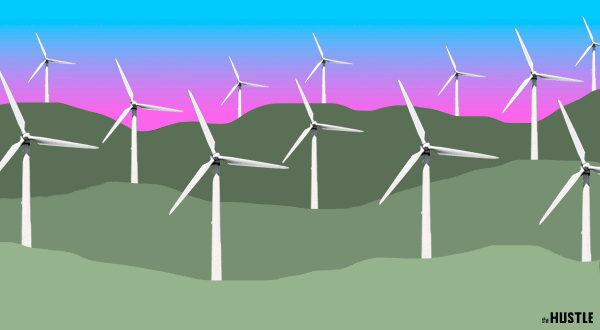
Wind energy holds immense importance in the context of renewable energy goals for several compelling reasons:
- Abundant and Inexhaustible Resource:
- Wind is an abundant and inexhaustible resource. It’s available globally and can be harnessed as long as there is air movement, making it a reliable and sustainable energy source.
- Clean and Low Carbon Emissions:
- Wind energy is clean and produces virtually no direct emissions of greenhouse gases or air pollutants when generating electricity. This significantly reduces carbon footprints and helps combat climate change.
- Energy Security and Independence:
- By diversifying energy sources, wind power enhances energy security and reduces dependence on fossil fuels, making countries less vulnerable to energy supply disruptions and price fluctuations.
- Scalability and Versatility:
- Wind energy is scalable and adaptable to various settings, from small-scale applications in remote areas to large wind farms serving urban centers. It complements other renewables like solar and can be part of a diversified energy portfolio.
- Job Creation and Economic Growth:
- The wind energy industry creates jobs in manufacturing, installation, operation, and maintenance. It stimulates economic growth in regions hosting wind farms and supports local communities.
- Rural Development:
- Wind farms are often located in rural areas, providing economic opportunities and stable income for landowners and communities through lease agreements and tax revenues.
- Technological Advancements:
- Ongoing research and development in wind turbine technology have led to increased efficiency and lower costs, making wind energy increasingly competitive with fossil fuels.
- Reduced Environmental Impact:
- Compared to many other forms of energy generation, wind power has a relatively low environmental impact in terms of water usage, habitat disruption, and waste production.
- Global Renewable Energy Targets:
- Wind energy plays a crucial role in helping countries achieve their renewable energy targets, as outlined in various international agreements such as the Paris Agreement and the United Nations Sustainable Development Goals.
- Grid Integration and Energy Reliability:
- Advances in grid integration and energy storage technologies are making it easier to integrate wind power into existing energy systems, ensuring a reliable and stable energy supply.
- Community and Public Support:
- Wind energy often enjoys high levels of public support due to its environmental benefits and potential for local economic development.
In the pursuit of a sustainable and carbon-neutral future, wind energy stands as a key pillar of the global transition to clean energy sources. Its role in reducing emissions, fostering energy independence, and driving economic growth underscores its significance in meeting renewable energy goals and addressing the urgent challenges of climate change.
